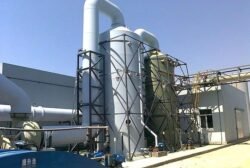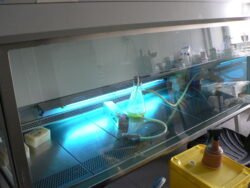
UV Disinfection Systems
The Dawn of UV Disinfection Systems: Harnessing Light for Health and Safety
In recent years, restoring cleanliness and ensuring safety in public and private spaces has been paramount. Among the arsenal of technologies available to achieve this, Ultraviolet (UV) disinfection systems have emerged as a vital force. These systems, employing the germicidal power of UV light, have revolutionized how we approach sanitation in environments ranging from hospitals to office buildings. As our world becomes increasingly aware of the need for effective and efficient disinfection methods, it is crucial to explore how UV disinfection systems work, their applications, benefits, challenges, and future potential.
Understanding Ultraviolet Light
What is Ultraviolet Light?
Ultraviolet light is a form of electromagnetic radiation with wavelengths shorter than visible light but longer than X-rays. It occupies the range of wavelengths from about 10 nm to 400 nm and is divided into different categories: UVA (315-400 nm), UVB (280-315 nm), and UVC (100-280 nm). While UVA and UVB light are partially responsible for effects like tanning and sunburn, UVC light is absorbed by the Earth’s atmosphere and does not naturally reach the surface.
The Germicidal Power of UVC Light
The disinfection prowess of UV light, particularly UVC, lies in its ability to inactivate microorganisms. UVC light achieves this by penetrating the cell walls of microorganisms and disrupting their DNA or RNA, rendering them incapable of replicating and causing infections. UVC light effectively neutralizes a broad spectrum of pathogens, including bacteria, viruses, mold, and fungi. This property makes it ideally suited for disinfection purposes.
How UV Disinfection Systems Work
Components of UV Disinfection Systems
A typical UV disinfection system consists of several key components:
-
- UV Lamps: The heart of the system, these are specialized lamps that emit UVC light at specific wavelengths. Mercury-vapor lamps have traditionally been used, but advances have seen the development of LED-based UV lamps that offer increased efficiency and longevity.
-
- Reflectors and Sleeves: These components help focus and direct the UV light, ensuring maximum exposure to the microorganisms.
Operational Mechanism
UV disinfection systems can be designed for various applications, including air, water, and surface disinfection:
-
- Air Disinfection: In HVAC systems and air purifiers, UV light is used to sanitize the air by killing airborne pathogens. These systems often incorporate UV lamps within the ductwork, where air circulates, ensuring pathogens are neutralized before recirculation.
-
- Water Disinfection: UV light is applied within water treatment facilities to purify drinking water by targeting microorganisms that could cause waterborne diseases. These systems use UV lamps submerged in water or placed in chambers where water passes through.
-
- Surface Disinfection: Hospitals and laboratories employ UV disinfection robots that move autonomously to irradiate surfaces and equipment, ensuring a sterile environment.
Applications Across Various Sectors
Healthcare and Medical Facilities
In healthcare settings, maintaining a sterile environment is paramount to preventing the spread of infections. UV disinfection systems are widely used to sanitize surgical tools, patient rooms, and high-touch surfaces. With the advent of the COVID-19 pandemic, the emphasis on infection control has only increased, leading to a surge in the adoption of UV disinfection within hospitals and clinics. Research has demonstrated that UV disinfection effectively reduces healthcare-associated infections (HAIs), offering a crucial layer of protection for both patients and healthcare workers.
Water and Wastewater Treatment
In the realm of water treatment, UV disinfection systems have been instrumental in ensuring safe drinking water. UV treatment is often employed as a final disinfection step in municipal water systems, targeting pathogens that might resist conventional chemical treatments. This method complies with stringent regulatory standards while avoiding the chemical by-products commonly associated with chlorine-based disinfection.
In wastewater treatment, UV disinfection serves as an eco-friendly alternative to chemical disinfection, enabling the safe release of treated effluent into natural water bodies without causing harm to aquatic life.
Food and Beverage Industry
Ensuring food safety is a top priority for the food and beverage industry. UV disinfection systems are used to sanitize water, surfaces, and packaging materials, reducing the risk of bacterial contamination. UV light is particularly effective in eliminating Listeria, Salmonella, and E. coli, common culprits in foodborne outbreaks. Additionally, UV treatment extends the shelf life of fresh produce by curbing microbial growth.
Hospitality and Public Spaces
Hotels, restaurants, and public spaces have increasingly embraced UV disinfection technology to maintain high cleanliness standards. In hotels, for example, UV disinfection systems are employed to sanitize guest rooms, linens, and common areas. Restaurants use UV light for utensils and surface sterilization, ensuring safe dining experiences for patrons.
Transportation
The transportation sector has also taken note of the benefits of UV disinfection systems. Airlines and public transport providers use UV light to disinfect passenger cabins, restrooms, and high-touch surfaces, ensuring a safe journey for travelers.
HVAC Systems and Indoor Air Quality
The role of HVAC systems in maintaining indoor air quality cannot be overstated. UV disinfection units integrated into HVAC systems help neutralize airborne pathogens, reducing the risk of respiratory infections. By incorporating UV technology, buildings achieve better air quality while improving energy efficiency by maintaining cleaner coils and reducing microbial build-up.
Advantages of UV Disinfection Systems
Efficacy Against Diverse Pathogens
One of the most significant advantages of UV disinfection systems is their broad-spectrum efficacy, which extends across bacteria, viruses, and fungi. This versatility makes UV systems an all-encompassing solution, particularly in environments requiring comprehensive sanitation.
Chemical-Free Disinfection
Unlike traditional chemical disinfectants, UV systems offer a chemical-free means of sanitization. This characteristic not only prevents the generation of harmful chemical by-products but also eliminates the risk of developing resistant strains of microorganisms.
Rapid Disinfection
UV disinfection occurs almost instantaneously, often requiring only a few seconds to neutralize pathogens effectively. This swift action is beneficial in high-traffic environments where downtime for cleaning must be minimized.
Environmentally Friendly
UV disinfection systems use significantly less energy compared to traditional chemical-based methods. Moreover, given the absence of chemical usage, there is no need for storage, handling, or disposal of hazardous substances, which reduces environmental impact.
Low Operational Costs
Once installed, UV disinfection systems require minimal maintenance. The operational costs are primarily associated with periodic lamp replacements, rendering them economically favorable over the long term.
Challenges and Limitations
Limited Penetration
While UV light is effective on exposed surfaces and pathogens in direct line of sight, it cannot penetrate opaque surfaces or liquids. This limitation necessitates thorough coverage to ensure complete disinfection.
Potential Safety Concerns
Direct exposure to UVC light poses risks to human health, including skin burns and eye injuries. Consequently, UV disinfection systems must be used with caution, employing safeguards like motion sensors and automatic shutoff mechanisms to protect users.
Initial Investment
The upfront cost of UV disinfection systems can be higher compared to traditional methods. However, this initial investment is often offset by long-term savings in operational costs and improved health outcomes.
Sensitivity to Variability
The efficacy of UV disinfection depends on various factors like intensity, exposure time, and the presence of particulates. Dust, soil, and biofilms can hinder performance, necessitating pre-cleaning for optimal results.
The Future of UV Disinfection Systems
As the world continues to grapple with the growing challenge of infectious diseases and the demand for hygiene intensifies, the future of UV disinfection systems looks promising. Innovations in UV technology, such as the development of far-UVC (222 nm) light, offer potential benefits for safe continuous use in occupied spaces without harming human health.
Additionally, advancements in LED technology are poised to replace traditional mercury-vapor lamps, offering energy-efficient, longer-lasting, and environmentally friendly options. The miniaturization of UV components also opens new possibilities for portable and customizable disinfection solutions, catering to diverse needs across sectors.
The incorporation of smart technology and IoT capabilities will further enhance the functionality of UV disinfection systems, enabling real-time monitoring, remote control, and data analytics for improved performance and accountability.
Conclusion
UV disinfection systems represent a critical advancement in the pursuit of safe and sanitary environments. Their efficacy, speed, and eco-friendly nature make them a powerful tool in combating a myriad of pathogens across multiple industries. While challenges remain, continued research and innovation hold the promise of evolving UV technology into an even more versatile, accessible, and indispensable component of global health and safety strategies. As we strive towards a cleaner, healthier future, UV disinfection systems shine a hopeful light on the horizon, guiding us toward greater hygiene and peace of mind.

